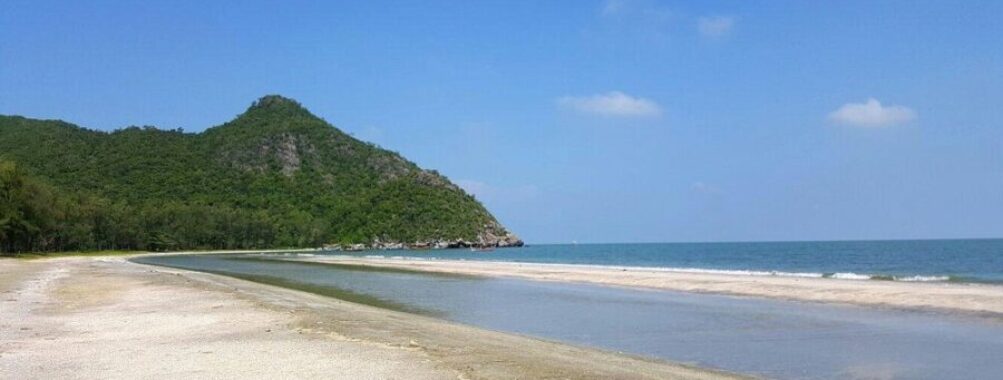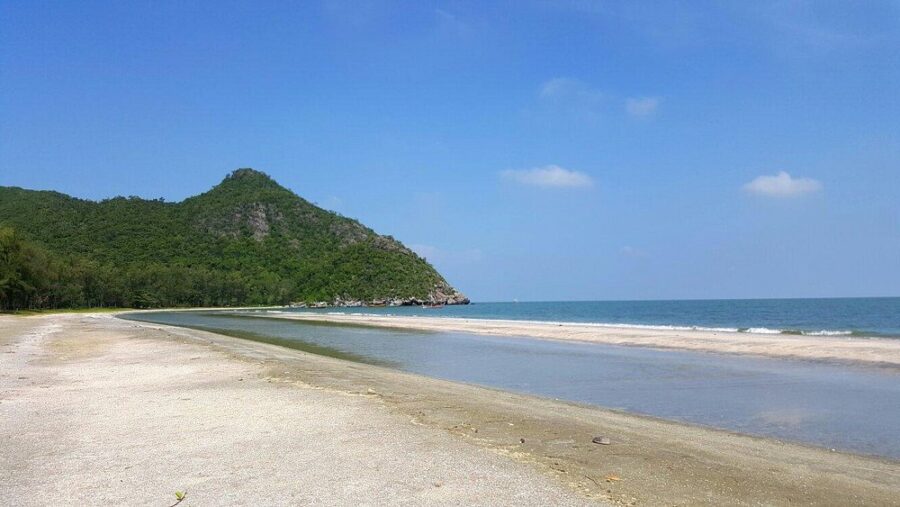
Hat Wanakorn National Park
Table of Contents
History and Significance

Established as the 76th national park in Thailand, Hat Wanakorn National Park boasts a rich history that speaks to the conservation efforts in the region. The park was created to protect its unique ecosystem, which includes sandy beaches and diverse marine life, such as coral reefs and wildlife. The park’s significance extends beyond its natural beauty; it plays a vital role in tourism, attracting visitors from all over the world who are eager to experience its stunning landscapes and vibrant wildlife. Additionally, the Department of National Parks has worked tirelessly to promote conservation and sustainable tourism in the area, ensuring that the natural wonders of Hat Wanakorn will be preserved for future generations.
The park’s establishment marked a significant shift in the region’s approach to preserving its natural environment. Hat Wanakorn National Park is not only a haven for tourists but also a critical zone for ecological research. Scholars and researchers frequently visit to study its unique biodiversity, particularly the marine ecosystems found along its shores. With its commitment to conservation, the park stands as a testament to Thailand’s dedication to protecting its natural heritage. As visitors explore the park, they are reminded of the importance of preserving such vital ecosystems for both wildlife and future generations.
Main Attractions and Activities
Hat Wanakorn National Park is home to a plethora of attractions that cater to all types of adventurers. One of the main highlights is the stunning Wanakorn Beach, famous for its soft sandy shores and crystal-clear waters, perfect for swimming and relaxing. Visitors can also engage in various activities like snorkeling to explore the vibrant coral reefs and rich marine life. The park offers several nature trails, allowing hikers to immerse themselves in the lush forests and observe the diverse wildlife that calls this national park home, including unique plant species and birds native to the region.
In addition to its natural beauty, the park features the serene Huai Yang waterfall, which is a great spot for picnics and family gatherings. The area is ideal for those who enjoy photography, as the breathtaking landscapes create picturesque moments. The park also provides opportunities for bird watching, as it is home to numerous avian species. Whether you’re interested in lounging on the beach, snorkeling among colorful fish, or trekking through the forest, Hat Wanakorn National Park offers a diverse range of activities that will keep every visitor entertained and engaged.
Visitor Experience
Visiting Hat Wanakorn National Park is an unforgettable experience that combines adventure, relaxation, and a deep connection to nature. Upon entering the park, visitors are greeted by stunning landscapes that range from sandy beaches to lush forest trails. The friendly staff at the park office provides valuable information and resources about the various attractions and activities available, ensuring that guests have a fulfilling experience. Many visitors find that the tranquil atmosphere allows them to unwind and escape the hustle and bustle of daily life, making it a perfect retreat.
Whether you’re traveling solo, with family, or as part of a group, the diverse offerings of Hat Wanakorn National Park cater to all. The park’s natural beauty creates a sense of peace that resonates deeply with those who visit. As you explore the park, you’ll likely encounter fellow nature enthusiasts, creating a sense of camaraderie and shared appreciation for the stunning scenery. The combination of breathtaking views, diverse wildlife, and engaging activities makes the visitor experience at Hat Wanakorn truly special, leaving lasting memories long after you’ve left.
Tips for Visitors
When planning your visit to Hat Wanakorn National Park, it’s essential to prepare adequately to make the most of your experience. First and foremost, make sure to check the weather, as conditions can vary throughout the year. If you’re planning to snorkel or swim, visiting during the dry season will provide the best weather and water clarity. Additionally, don’t forget to pack sunscreen, a hat, and plenty of water to stay hydrated while exploring the park’s trails and beaches. Comfortable footwear is also a must, especially if you plan to hike through the nature trails.
Another tip for visitors is to arrive early to fully enjoy the park before the crowds start to gather. This way, you can take advantage of the serene environment and capture stunning photographs without interruptions. Consider bringing a picnic to enjoy at one of the scenic spots, as the park’s atmosphere is perfect for leisurely lunch breaks. Lastly, always respect the park’s wildlife and natural surroundings; follow guidelines set by the Department of National Parks to ensure a safe and enjoyable experience for both you and the environment.
Accessibility and Facilities
Hat Wanakorn National Park is designed with accessibility in mind, making it easy for visitors of all ages to enjoy its offerings. The park features well-maintained roads and pathways that allow access to major attractions, such as Wanakorn Beach and Huai Yang waterfall. Facilities within the park include restrooms and designated picnic areas, ensuring a comfortable experience for guests. Additionally, the park’s office provides helpful resources, including maps and information about guided tours, making it easier for visitors to navigate and plan their activities.
For those traveling from nearby areas like Hua Hin or Bangkok, reaching Hat Wanakorn National Park is straightforward, with various transportation options available. Whether you choose to drive or take public transport, the park is accessible and welcoming. Many visitors appreciate the well-organized facilities that enhance their experience, allowing them to focus on enjoying the stunning beauty of the park. With its dedication to providing a friendly and accessible environment, Hat Wanakorn National Park stands out as a must-visit destination for anyone exploring the Prachuap Khiri Khan province.
Unique Features
What sets Hat Wanakorn National Park apart from other national parks in Thailand is its unique blend of marine and terrestrial ecosystems. This park is home to the 18th Marine National Park, which is a significant feature for snorkeling and diving enthusiasts. The vibrant coral reefs and rich marine life provide a spectacular underwater experience that draws visitors from near and far. In addition to its marine wonders, the park’s lush forests, home to various wildlife species, create a remarkable contrast to the sandy beaches, making it a true natural wonder.
Another unique aspect of Hat Wanakorn National Park is its commitment to conservation and sustainable tourism. The park actively promotes eco-friendly practices to protect its delicate ecosystems while allowing visitors to enjoy its natural beauty. This dedication ensures that the park remains a pristine environment for generations to come, making it an excellent example of responsible tourism. Whether you’re exploring the tranquil beaches, snorkeling in the reefs, or wandering through the forest trails, the unique features of Hat Wanakorn National Park provide a captivating experience for all who visit.
Overall Impressions
Overall, Hat Wanakorn National Park is a captivating destination that offers a mix of stunning natural beauty, exciting activities, and a commitment to conservation. The park’s diverse landscapes, ranging from sandy beaches to lush forests, create a picturesque backdrop for visitors seeking adventure or relaxation. Many guests leave feeling rejuvenated and inspired by the breathtaking views and the rich wildlife that thrives within the park. The friendly atmosphere and well-maintained facilities further enhance the overall visitor experience, making it a must-visit spot in Prachuap Khiri Khan province.
The remarkable combination of marine and terrestrial ecosystems sets this national park apart, allowing visitors to engage with nature in a way that few other locations can offer. Whether you’re snorkeling among colorful coral reefs or hiking through the serene forest trails, Hat Wanakorn National Park provides a unique opportunity to connect with Thailand’s natural heritage. The memories created here will undoubtedly linger long after visitors leave, emphasizing the park’s status as a treasured destination for nature lovers and adventure seekers alike.
Pros and Cons
Like any destination, Hat Wanakorn National Park comes with its own set of pros and cons that visitors should consider before planning their trip. On the positive side, the park’s stunning landscapes, diverse wildlife, and variety of activities cater to all interests. The accessibility and well-maintained facilities allow for a comfortable experience, and the park’s commitment to conservation makes it an excellent choice for eco-conscious travelers. Additionally, the opportunity to snorkel in vibrant coral reefs adds an exciting element to the visit.
However, there are a few potential drawbacks to keep in mind. The popularity of the park can lead to larger crowds during peak tourist seasons, which may detract from the overall experience for some visitors. Additionally, while many areas are accessible, certain trails and attractions may require a bit of effort to reach, which could be challenging for those with mobility issues. Despite these cons, the overall impression of Hat Wanakorn National Park remains overwhelmingly positive, making it a worthwhile destination for anyone looking to explore the natural beauty of Thailand.
Location
Places to Stay Near Hat Wanakorn National Park
Find and Book a Tour
Explore More Travel Guides
No reviews found! Be the first to review!